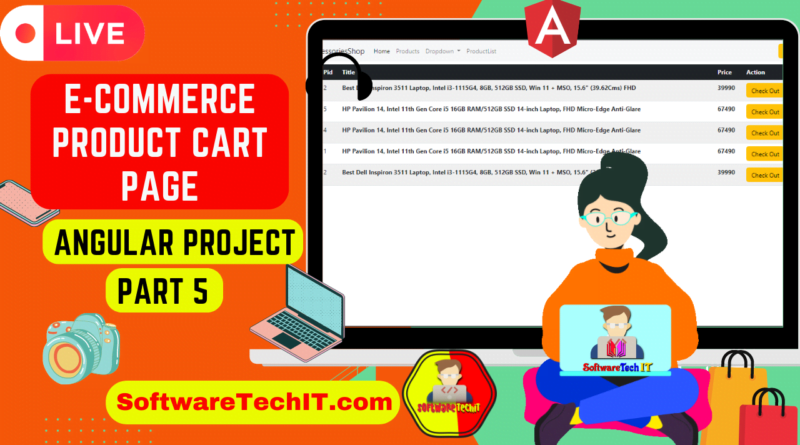Angular Part 5: Create Product Cart Page in Angular & API URL | Create EAccessoriesShop Angular
Here’s an example of how you can create a product cart page in an Angular app and use an API endpoint to store and retrieve the cart data:
- Create a new component for the cart page, let’s call it
cart-page. You can do this by running the following command:
ng generate component cart-page
In the cart-page component’s class (cart-page.component.ts), you can create an array to store the products in the cart, and a function to add products to the cart.
In your cart-page.component.ts file, you can create the function getCartFromApi() and saveCartToApi() to handle the API calls. To make the API calls, you can use HttpClient module from @angular/common/http
cart.component.ts
import { Component, OnInit } from '@angular/core';
import { CartModel } from '../models/cart.model';
import { CartService } from '../services/cart.service';
import { Route, Router, RouterLink } from '@angular/router';
@Component({
selector: 'app-cart',
templateUrl: './cart.component.html',
styleUrls: ['./cart.component.css'],
providers:[CartService]
})
export class CartComponent implements OnInit {
cartProduct_list:CartModel[]=[]
constructor(private http_service:CartService,private router : Router) {
}
ngOnInit(): void {
this.http_service.getCartProducts().subscribe((data)=>this.cartProduct_list=data['result'])
}
checkOutItem(cid:number){
this.router.navigate(["/checkout"]);
}
removeItem(cid:number){
this.http_service.removeCartItem(cid);
}
}
In the cart-page component’s template (cart-page.component.html), you can display the products in the cart using the *ngFor directive.
cart.component.html
<div class="container">
<table class="m-2 table table-striped ">
<thead class="table-dark">
<tr>
<th>#</th>
<th>Pid</th>
<th>Title</th>
<th>Price</th>
<th>Action</th>
</tr>
</thead>
<tbody>
<ng-container *ngFor="let cart of cartProduct_list">
<tr>
<td>{{cart.id}}</td>
<td>{{cart.pid}}</td>
<th>{{cart.title | slice:0:100}}</th>
<th>{{cart.price}}</th>
<td><button class="btn btn-warning" type="submit" (click)="checkOutItem(cart.id)">Check Out</button></td>
</tr>
</ng-container>
</tbody>
</table>
</div>Finally, in your app-routing.module.ts file, add a new route for the cart-page component.
import { CartPageComponent } from './cart-page/cart-page.component';
